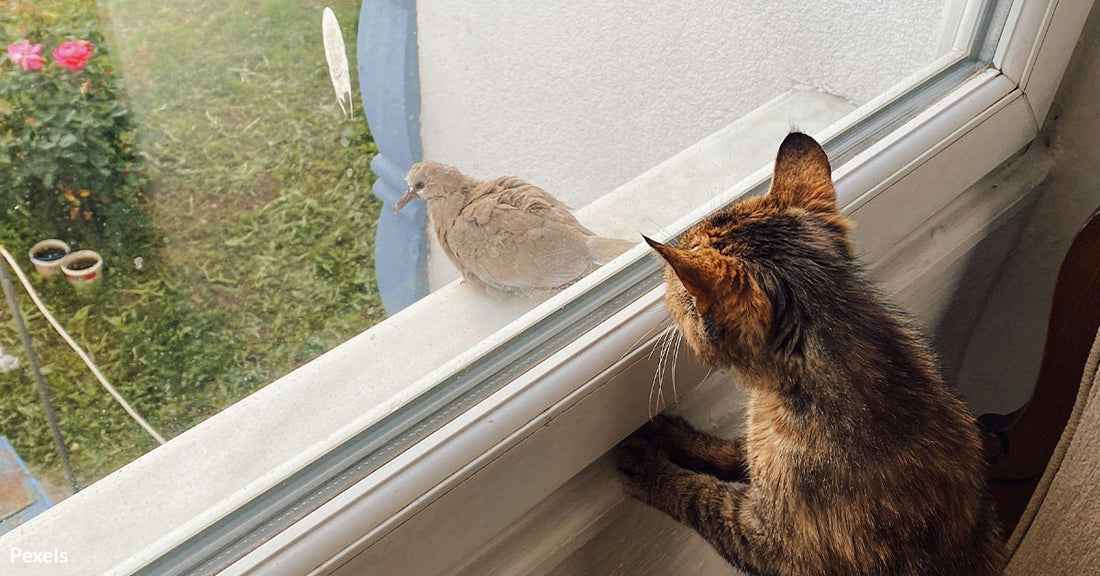Protect Your Pets from the Deadly Threat of Bird Flu
Matthew Russell
Bird flu, or avian influenza, has become a growing concern not just for birds but also for pets. Recent outbreaks reveal that cats, in particular, are at risk of contracting this virus.
With cases linked to contaminated raw food and infected wildlife, pet owners must take proactive steps to keep their animals safe. Here’s how you can protect your pets from this serious illness.

Understanding the Risk to Pets
Bird flu primarily affects wild birds and poultry, but it can also spread to other animals, including cats and dogs. The current strain of the virus, H5N1, has been detected in domestic and wild mammals across the United States, Canada, and Europe, according to the Centers for Disease Control and Prevention. Cats seem particularly vulnerable, with infections traced to raw food and contact with infected birds.
A notable case in Oregon involved a house cat that died after eating raw pet food contaminated with the virus. This prompted a nationwide recall of the affected product, as reported by NPR. Similarly, outbreaks in wildlife sanctuaries have killed dozens of big cats, likely due to their diet of raw chicken.

Symptoms to Watch For
Bird flu in cats can present with various symptoms, including lethargy, fever, appetite loss, eye and nose discharge, difficulty breathing, and even seizures. These signs should be taken seriously, as the virus has a high mortality rate in felines, according to the American Veterinary Medical Association. Immediate veterinary care is critical if your cat exhibits these symptoms.
Dogs are less susceptible than cats but are not immune. A case in Canada involved a dog that died after chewing on a dead goose, highlighting the need for vigilance, as reported by CIDRAP.

Steps to Keep Your Pets Safe
Experts recommend several precautions to reduce the risk of bird flu for pets:
- Avoid Raw Diets: Feeding pets raw meat or milk can expose them to the virus. Cooking thoroughly destroys pathogens, including bird flu. Dr. Michael Bailey of the American Veterinary Medical Association told 6ABC that pet owners should stay away from raw diets in light of these outbreaks.
- Supervise Outdoor Activities: Cats that roam outdoors are at greater risk of encountering infected birds or rodents. Keeping pets indoors minimizes their exposure to these potential sources of infection.
- Practice Good Hygiene: Avoid touching sick or dead birds, and wash your hands thoroughly after handling animals or cleaning litter boxes. The CDC advises wearing gloves and using disinfectants if contact with bird droppings or contaminated surfaces is unavoidable.
- Monitor Your Pet’s Health: If your pet shows unusual behavior, such as unsteadiness or aggression resembling rabies symptoms, consult a veterinarian immediately. Early intervention can be lifesaving.

Human Safety Around Pets
While rare, bird flu can spread from infected pets to humans, particularly in cases of prolonged close contact without protective measures. A 2016 case in New York City involved a veterinarian who contracted the virus after treating sick cats without personal protective equipment, according to a study published in Clinical Infectious Diseases. However, no such transmissions have been reported during the current outbreak.
The ongoing bird flu outbreak underscores the need for caution among pet owners. By avoiding raw diets, supervising outdoor activities, and practicing good hygiene, you can significantly reduce the risk to your furry companions. If your pet shows signs of illness, don’t delay seeking veterinary care. Staying informed and vigilant is key to keeping your pets safe.

